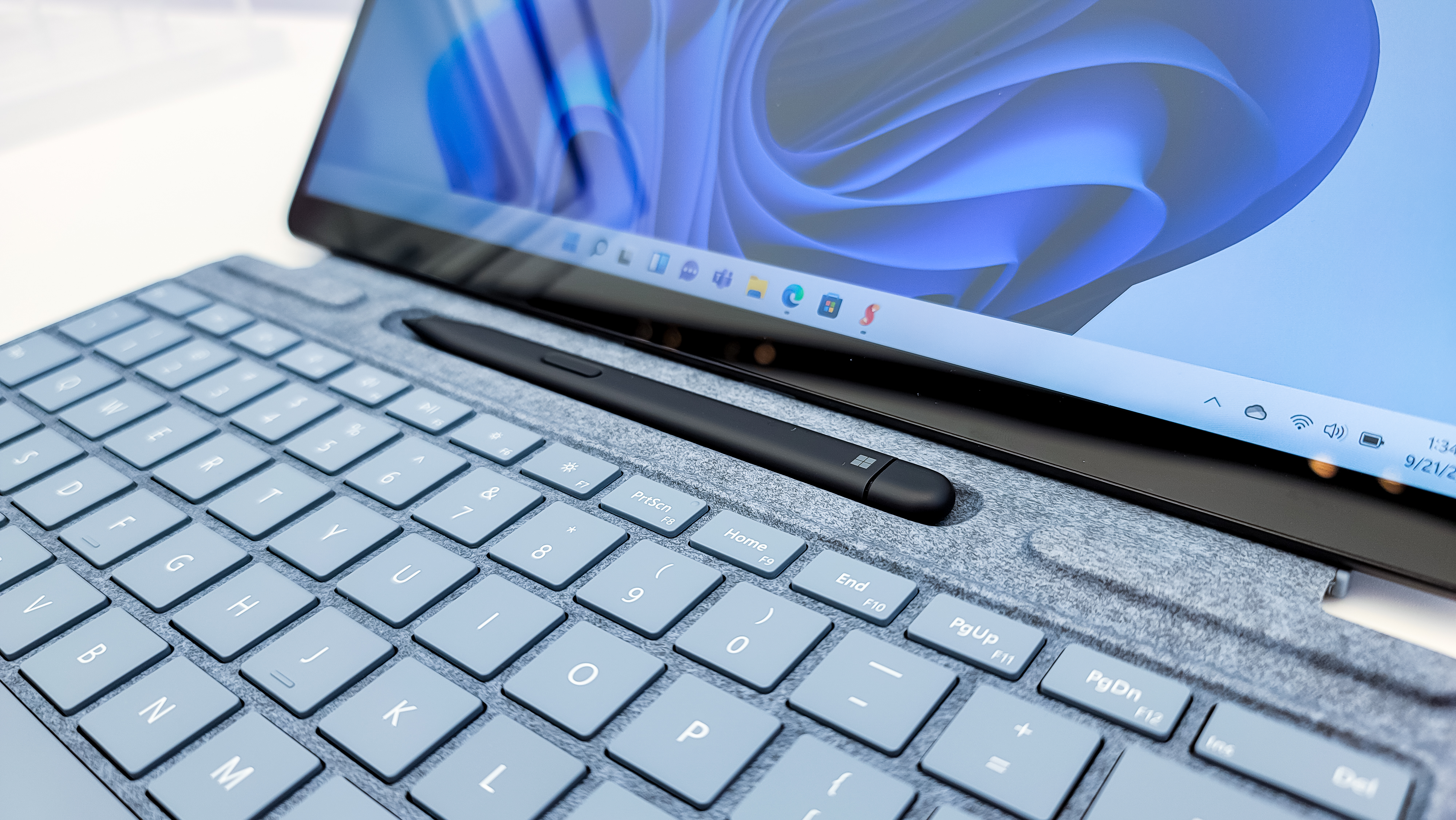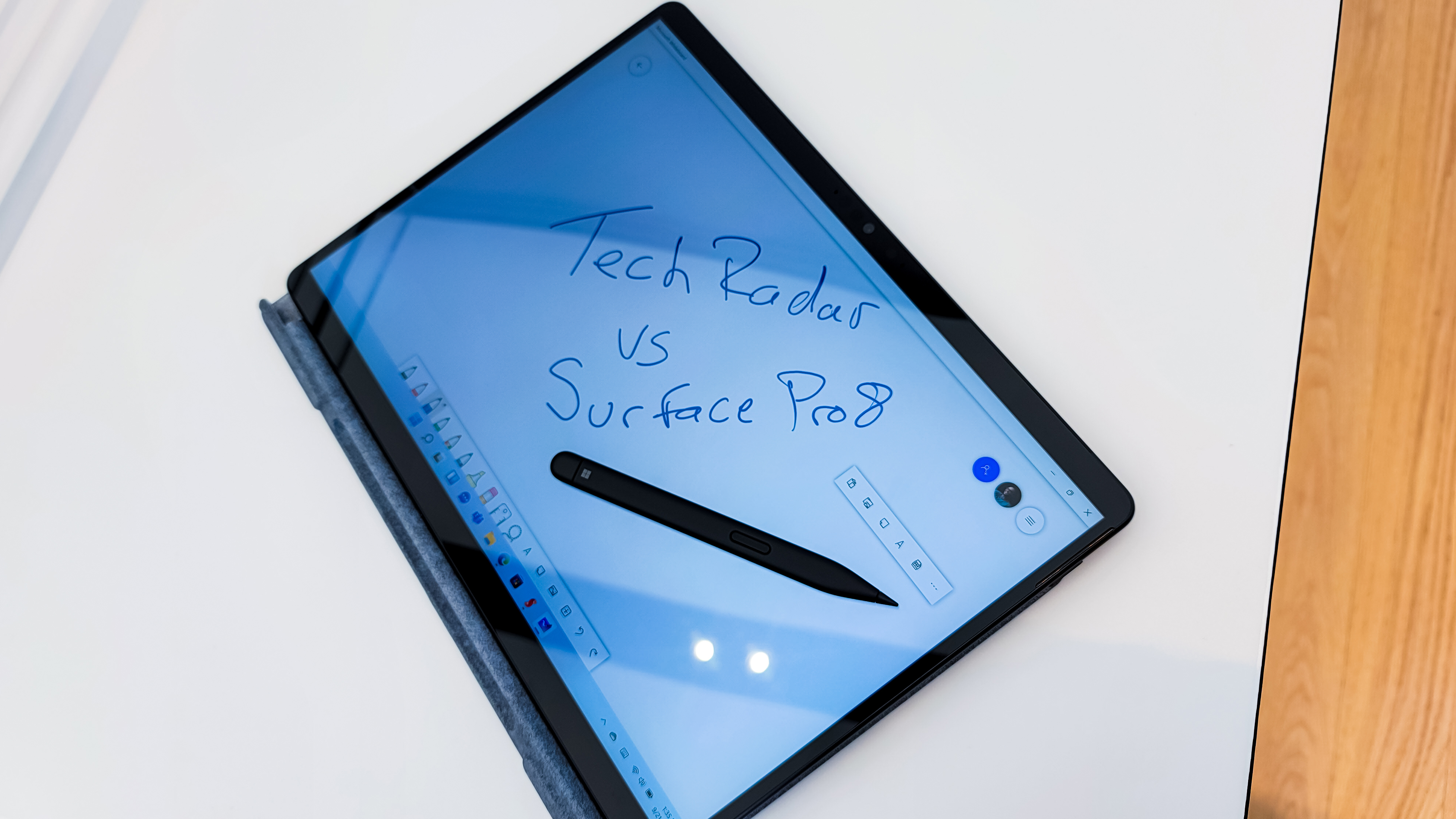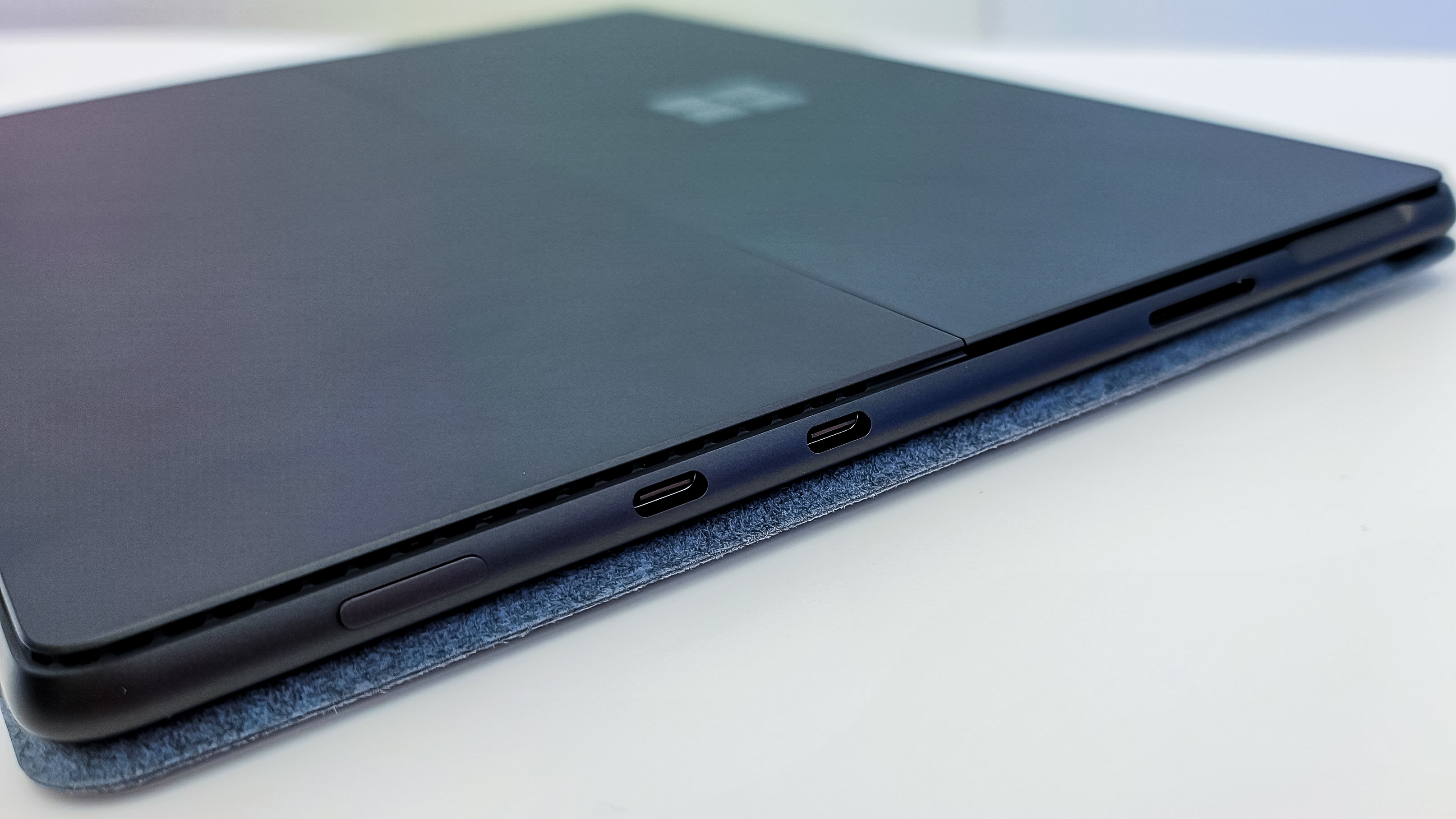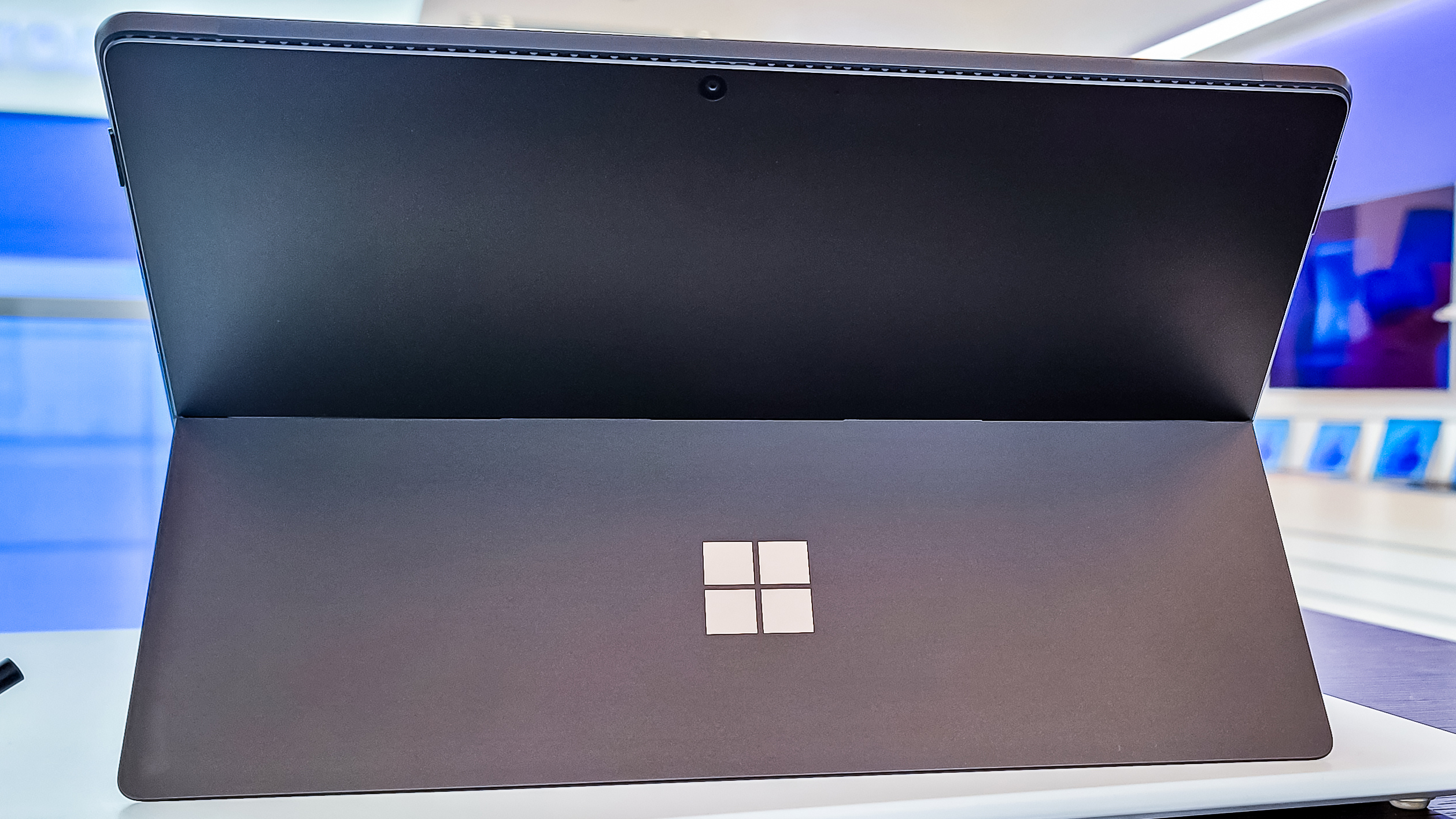Surface Pro 8
The Surface Pro 8 is probably the biggest change to the Surface Pro in years, bringing some design improvements we've been begging for along with faster performance. It's still very much recognizable as part of Microsoft's core line of Windows tablets, but it truly feels like a new generation – just in time for the launch of Windows 11.
It really is the perfect time to launch an all-new Surface Pro, as Windows 11 brings some major improvements for tablets, and this should be the best device to see that.

Price and availability
The Surface Pro 8 is available for pre-order starting today, starting at $1,099 (around £810, $1,500). That will get you an Intel Core i5-1135G7 processor, 8GB of RAM and a 128GB SSD.
It's a pretty big bump from the Surface Pro 7, which launched at just $749/£799/AU$1,249. However, that was for a configuration with just a Core i3 processor and 4GB of RAM. But the Pro 7 configuration with a Core i5, 8GB of RAM and a 128GB SSD launched for just $899/£899/AU$1,499, which is a full $200 cheaper in the US. It's a pretty massive price difference.
Of course, if you want a more powerful Surface Pro 8, you can pay to upgrade it. You can upgrade the Surface Pro 8 all the way to an Intel Core i7 processor, 32 GB of RAM and a 1TB SSD, which will set you back $2,599 in the US.
The UK tops out at 16GB of RAM, but with the same specs otherwise, and that top-end spec will set you back £2,059. Microsoft has not listed the Surface Pro 8 in Australia yet.
That makes the Surface Pro 8 the same price as the 12-9-inch iPad Pro to start, and we're not sure that's a comparison Microsoft wants, at least when it comes to performance. In our testing, the Apple M1, which is in both the iPad Pro and some Macs, absolutely wipes the floor with 11th-generation Intel U-series processors. Microsoft has some pretty stiff competition with its oldest rival.

Design
The Surface Pro lineup kind of started to stagnate for the last couple iterations. Both the Surface Pro 6 and Surface Pro 7 were just spec updates of the Surface Pro 2017. That wasn't necessarily a bad thing, as four years ago, the Surface Pro was a pretty fresh device. But now it needs a pretty substantial redesign, especially in the face of the new iPad Pro, which Microsoft has pretty much left alone since its introduction.
The Surface Pro 8, luckily, brings some much-needed design improvements to the table. The easiest one to notice is the new graphite color, which simply looks incredible. While it seems like Microsoft has been focusing on lighter shades for its devices in recent years, the darker colors with this year's lineup look incredible.
The chassis is also refined, with more rounded edges, that seem much more comfortable to hold for long periods of time, rather than the flat sides with sharper corners.
Bezels are also smaller than ever, and this is that final thing that makes the Surface Pro 8 look like an all-new device, rather than a relic from the early 2010s. It makes the screen look so much bigger, and makes the device look more premium than ever – which is good, because it's also more expensive than ever.
The smaller bezels do more than just look good, though: they allow for an 11% larger display. The Surface Pro 8 now has a 13-inch PixelSense display with a resolution of 2,880 x 1,920. That's right in the middle of 1440p and 4K, but for a 13-inch display, it's absolutely gorgeous. What makes this display even better is that along with the bigger size, it also has a 120Hz refresh rate. This is definitely not a gaming device, but take it from us – once you use a high-refresh display, even for everyday computing, you're not going to want to go back.
Microsoft tells us that the display will be configured to 60Hz out of the box, mainly in the interest of boosting battery life, but you can enable it at any time by going into your display settings.
Usually, Microsoft pairs the launch of a new Surface Pro with a whole new lineup of Surface accessories, like a new pen and Type Cover. This time around, though, Microsoft is sticking with the same Type Cover that launched with the Surface Pro X, and which has apparently been incredibly popular. That means you might not need to buy a new Type Cover if you upgrade, which is good because Microsoft isn't going to include it in the box.
Microsoft has also finally changed the ports. For years, the Redmond company has refused to use Thunderbolt, citing security concerns. It must have found a way around them, however, because the Surface Pro 8 has full support of Thunderbolt 4. This means a whole new world of accessories and peripherals are finally open to the Surface Pro 8, including external GPUs, which are a huge boon to the creative professionals that are most likely to buy a Surface Pro in the first place.
The Surface Pro 4 has two Thunderbolt 4 ports, a 3.5mm headphone jack and the Surface Connect port. It does lose the USB 3.0 Type-A port that the Surface Pro 7 had, but we're actually fine with that for this product. It is a tablet, after all.

Performance
With a device that's meant to be as portable as the Surface Pro 8, performance is always a difficult balance to strike. You want it to be fast, but you don't want to push it so hard that battery life goes down the toilet and it becomes too hot to handle. Microsoft has apparently put a lot of effort into re-engineering the internals of the Surface Pro 8, and it allowed Microsoft to configure the processor with a higher TDP than past versions of the laptop – boosting it to 23W instead of the 15W of the Surface Pro 7's processor.
That's not going to be a night-and-day difference, but combine that with just how much faster Tiger Lake, compared to the the low-power Ice Lake chips in the last laptop and Microsoft is claiming up to a 2x performance increase. That's a pretty bold assumption, and we can't say one way or another without properly testing it.
If Microsoft's performance claims about the Surface Pro 8 are right, it's going to be a massive win for creatives that use the device for their work, as it will ultimately mean less time waiting for the device to respond.
We didn't have the time to really put the Surface Pro 8 through its paces, but we absolutely will once we get it in our labs for a full review. We're skeptical that the tablet is actually two times as fast as its predecessor, but it's definitely going to be a substantial improvement. And, combined with its much-improved design and gorgeous new display, we couldn't really ask for anything more.

Early verdict
We were expecting the Surface Pro 8 to be the most predictable and boring entry in Microsoft's 2021 Surface lineup, but we were pleasantly surprised. Microsoft has brought a lot of improvements that we were asking for, along with a much-needed boost to its internal components.
That does come with a higher price tag, however, which will be a tough pill to swallow for some. It's going to be interesting to see it side-by-side against the iPad Pro with an M1, because that's going to be its toughest competition. Either way, though, it should still be a compelling product for artists that are more comfortable on a Windows platform.
0 comments:
Post a Comment